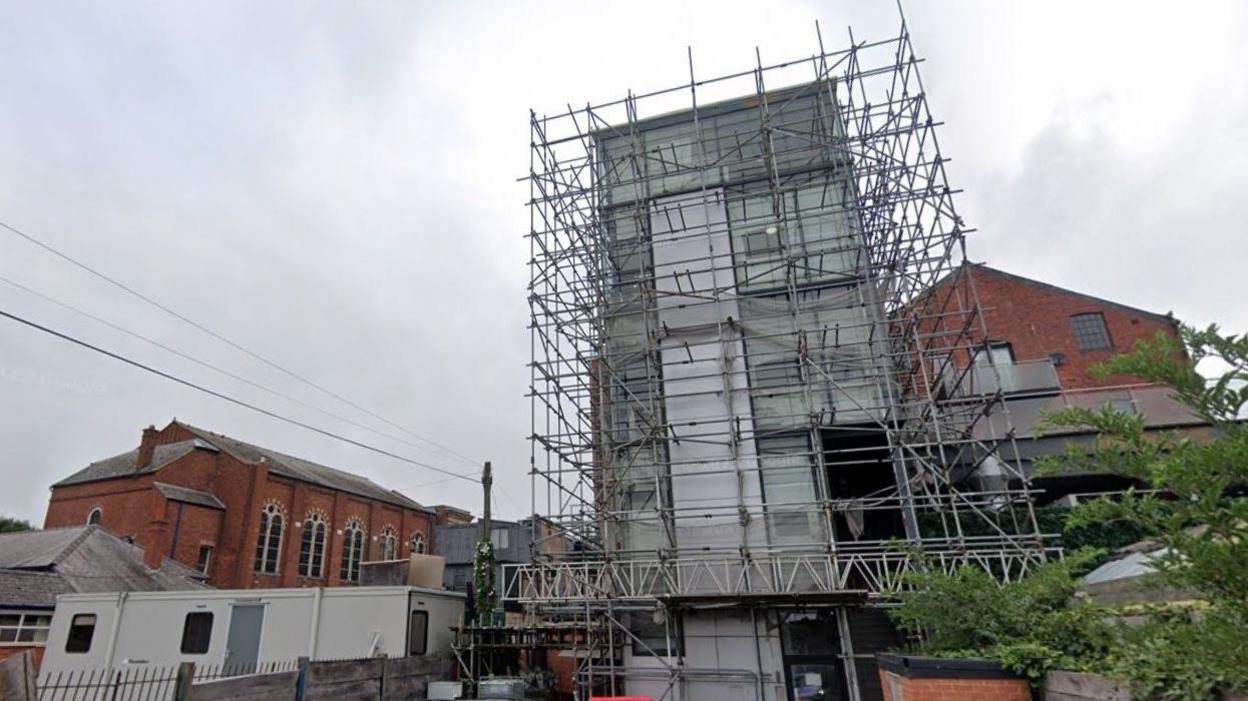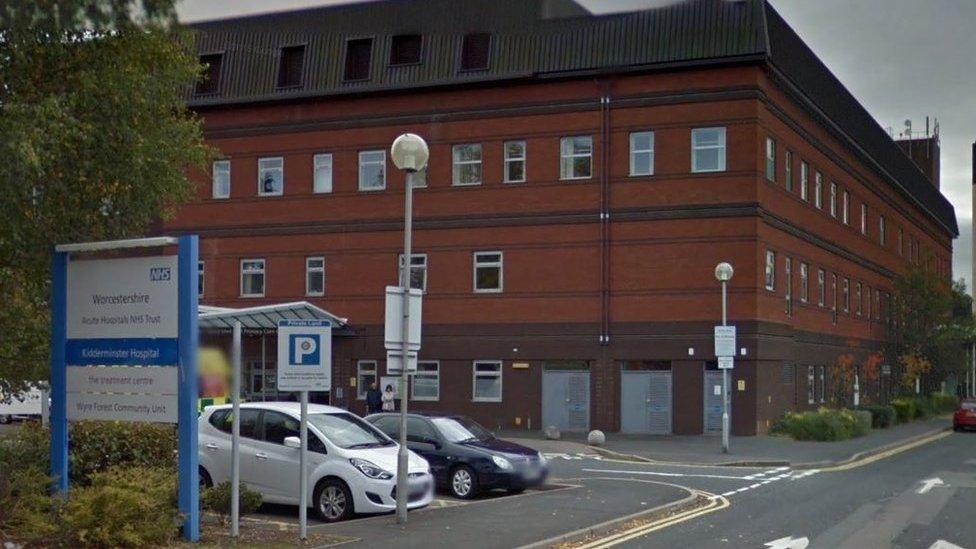Council pays £65,000 for private flat scaffolding

The building's rear façade is covered by scaffolding
- Published
A council has spent £65,000 in 13 years on "eyesore scaffolding" on city-centre flats it does not own.
Five-storey Jacob's Court, a former warehouse on Commercial Road, Hereford, was converted into flats in the early 2000s.
Herefordshire Council secured a court order to put up scaffolding in 2010 after building control inspectors found structural issues.
The council said it would seek to recoup the money from the property's owners.
The scaffolding covers the rear of the building, accessed from Kyrle Street, where a glazed stair and lift tower were added.
Building control said in 2010 the structure was not strong enough to support the glass panel cladding.
A planning application by Alison Rogers of Jacob’s Court Residents Company to replace the panels with new, lighter silver-coloured cladding was granted permission over a year ago.

Jacob's Court fronts on to the city's busy Commercial Street
Former councillor Jeremy Milln, writing in a private capacity, asked the local authority how much money was owed for the scaffolding, how it would be recovered and when the "eyesore" would be removed.
Cabinet member for environment councillor Elissa Swinglehurst responded: "The total cost of the scaffolding to date is circa £65,000. The council will seek to recover this cost.”
She added: “Whilst retaining the scaffolding is a cost burden to the council due to the public interest of maintaining safety, the responsibility of resolving the situation lies with the owners of the property."
The council was in touch with the owners but a solution had not been agreed, she added.
The residents' company has been approached by the Local Democracy Reporting Service (LDRS) for a comment.
At nearly 60ft (18.2m) tall, the building is one of the highest residential structures in Hereford.
While still ward councillor, Mr Milln responded to last year's planning application by writing the glass panels afforded "wonderful panoramic views out across the city and the hills beyond".
He continued: "It is to be regretted that a scheme of composite panels will make the interior gloomy without improving the look of the exterior.”
Related topics
See also
- Published23 November 2023

- Published23 November 2023

- Published23 November 2023
